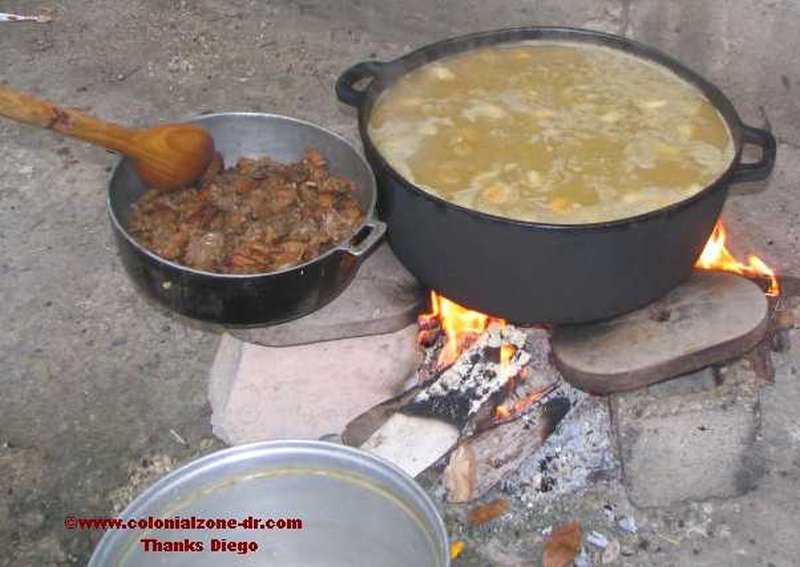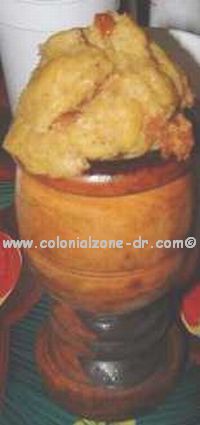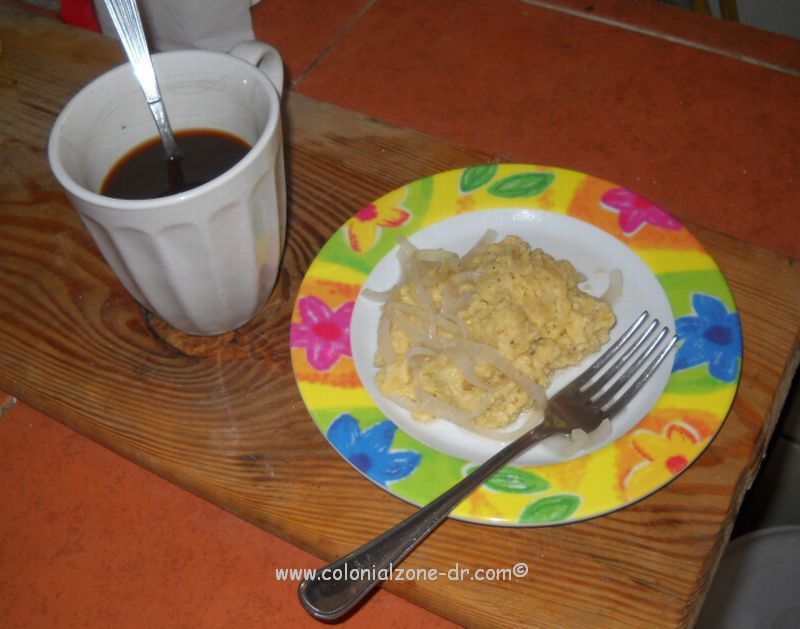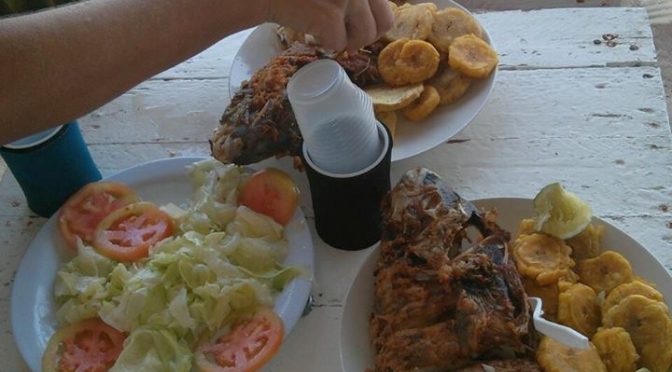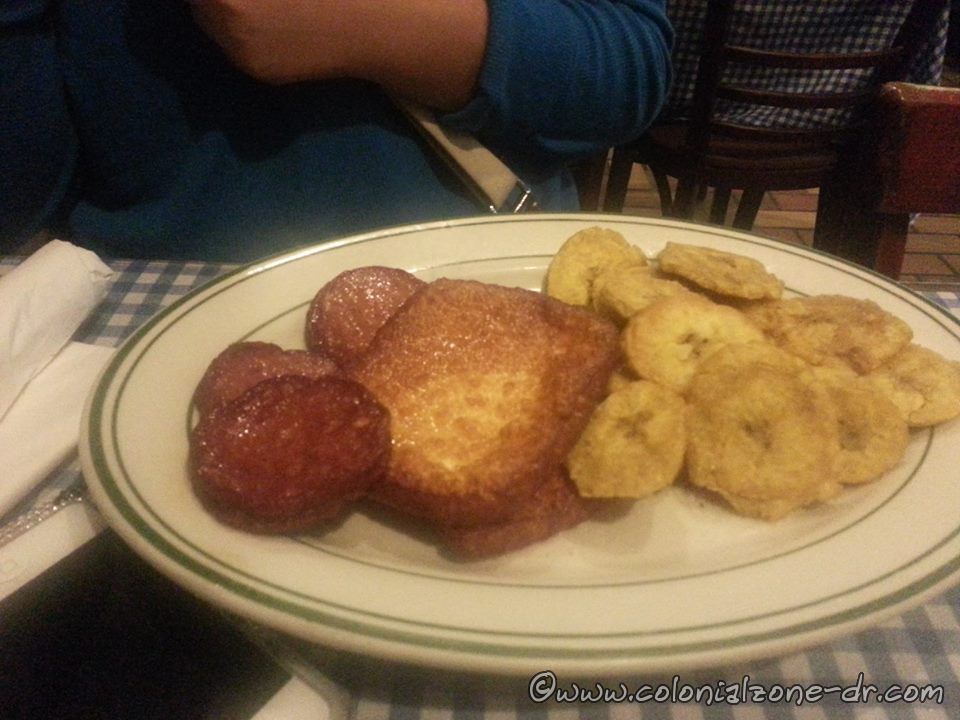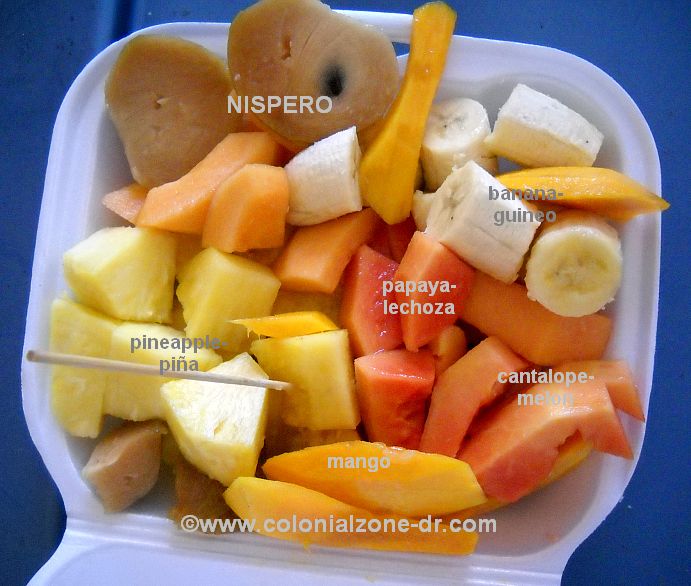Recipes Page 2 – Beans, Rice and Corn Fritters
Dominicans love their rice and beans. It is a joke that if a Dominican goes without rice for even a day they will perish. It is such a staple in everyday eating. The typical dish “La Bandera” is consumed daily in some form by most Dominicans. Beans are also a staple food in Dominican Republic. Beans cooked runny, with rice or sweet as a desert, all are just so good. Let’s do some cooking!
Habichuelas con Dulce/Sweet Beans | La Bandera Dominicana/The Dominican Flag(meat Guisado, Arroz Blanco, Habichuelas, Ensalada) | Chofan/Dominican Style Chinese Fried Rice | Arepitas de Maiz/Fried Corn Meal Cakes
Habichuelas con Dulce
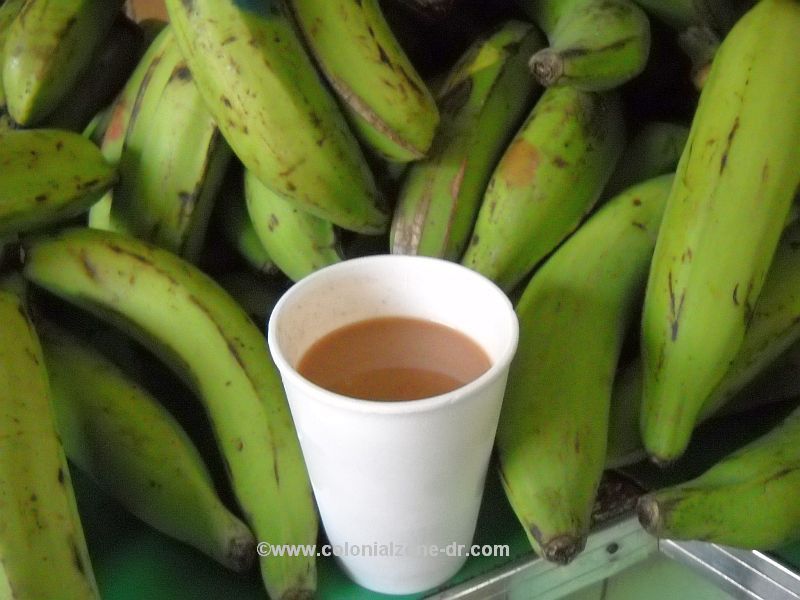
Habichuelas con Dulce / Sweet Beans are a typical Dominican dish. Each cooker of this sweet dish has their own way to make it special by adding a touch of something different to the traditional recipe. It is a sort of pudding but not as thick. It is made with Kidney Beans, Yam, Condensed Milk, Raisins and Cinnamon. It sounds terrible but trust me, it is wonderful. This dessert has become an Easter/Semana Santa tradition, served during Lent, in the Dominican household.
(Bon Helados also serves up an ice cream version that is wonderful during the Easter season)
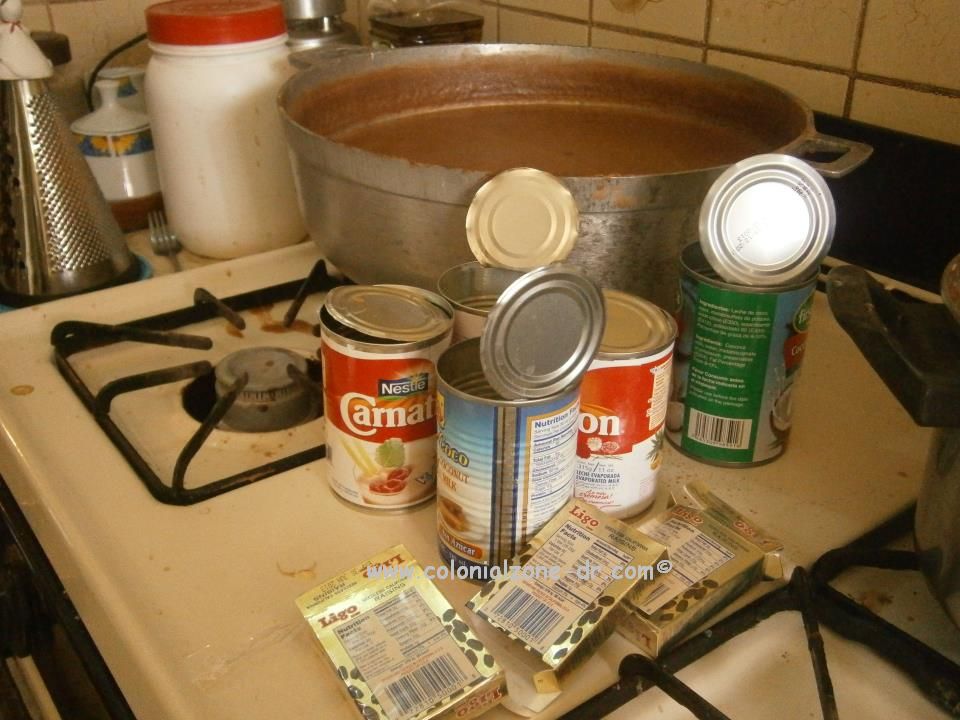
Ingredients:
2 cups cooked kidney beans/habichuelas rojas
2 cups water reserved from the beans
1/4 cup of raisins/ciruelas pasas
3 cups of evaporated milk/leche evaporada
1 cup of coconut milk/leche de coco
1 cup sweetened condensed milk/Leche Condensada
1/2 lb of sweet potatoes/batatas cooked and mashed
1/2 cup of sugar/azucar
2 cinnamon sticks/palitos de canela
2 tablespoons butter/mantequilla
8 to 10 cloves/Clavos dulces
1/2 teaspoon salt/sal
optional
Cassava bread toasted/casabe tostado or milk cookies/galleticas de leche

Instructions:
Puree the beans with a little cooking liquid and then strain.
Add beans, coconut milk, evaporated milk and bring to a boil
Lower heat to medium add the Condensed milk, sugar, cinnamon stick, raisins and sweet potatoes
Keep stirring so it does not stick.
Add the rest of the ingredients.
Stir until the desired consistency has been reached.
Serve warm or cold with the cassava bread or float the cookies on top.
I have been known to enjoy a few bowls before feeling satisfied. This is a treat you will ever forget. It sounds terrible but it is ever so tasty. ¡Que Sabroso!
La Bandera Dominicana / The Dominican Flag

La Bandera Dominicana/The Dominican Flag is typically prepared for lunch and is the most important meal in Dominican Republic. It is a combination of beans, rice, meat/seafood and salad type dish. It is very filling and satisfying and is quite healthy also because it is made with fresh ingredients.
The meat is cooked Guisado/Stewed this is a general recipe for making the stewed meats. You can use this recipe to make Pollo Guisado/ Stewed Chicken, Rés Guisada/Stewed Beef, or other stewed meats.
Carne Guisado Recipe: Cut bell peppers, chop some celery, add some onion cut coarse, preferably red onion, some tomatoes cut in large pieces, some mashed garlic, tomato paste to give it some liquid and thicken up the sauce, some lemon or vinegar, a few green olives if you desire, a little dash of sugar, and some oregano, salt and a little oil. Sauté the meat (usually cut in medium to small bite sized pieces) in the oil then add the veggies and spices. Add a little water and cover and let simmer until the meat is cooked and veggies are soft. Add water as needed. Mix the tomato paste in a little water and add to the mix until the desired consistency has been reached.
Arroz Blanco Recipe

The Arroz Blanco/White Rice is cooked soft. Add a little oil to the rice so you can get some Concón/ Burnt Rice on the bottom of the pan. This is a delicacy and is the sign that you have mastered the Dominican rice cooking.
This is the way Dominicans make their white rice.
Ingredients:
2 1/2 cups raw rice rinsed and drained
3 TBSP cooking oil
1 1/2 tsp. salt
4 cups water
Instructions:
A heavy skillet is best. Add oil salt water and rice to the pan. Mix. Cook over high heat until boiling. Lower the heat, cover and simmer for about 20 minutes, or until the rice is tender and the water absorbed. Remove the lid and allow the rice to rest a few minutes. For concon let the rice cook on low heat on the stove for a little time more until the crust appears on the bottom of the pan. It takes a little skill and some luck to easily remove the con-con from the bottom of the pan. Serve the rice hot and the con-con on the side.
Habichuelas Guisadas Recipe
The Habichuelas Guisadas/Stewed Beans can be made with any type of bean, red, white, fava, lentils, whatever you have on hand.
Recipe:
Cook the beans until soft or buy them in a can. Add some chopped celery, some squash if you have it, a little onion, parsley, thyme, oregano, coriander or cilantro, some mashed garlic, a cube of chicken stock, a little oil, some tomato paste, and salt. Cook the veggies and spices in the oil until they are soft. Add the stock and tomato paste. Add the beans. Mash the beans a little to make them juicy. Cook until they have thickened up a little, adding water if needed. Adjust the ingredients to your taste.
Ensalada
Make a small Ensalada/Salad with lettuce and tomato, cut up an avocado and top with límon or vinegar and oil. You can finely chop cabbage with some tomato and peppers with oil and vinegar dressing. Make Dominican style potato salad called Ensalada Hervida/Boiled Salad using boiled carrots, potato, eggs, with an oil and vinegar dressing.
Now for the best part….this is my favorite step (drum roll please). Serve all this on a large plate. Put the beans on top of the rice. Let some of the meat juice get on the rice also. Place a little of the Concón on the plate. Put the salad on the side. Get a big glass of ice water and a big spoon and enjoy. When finished have a sweet or a cup of coffee. Now you have eaten the typical Dominican lunch just like a true Dominican.
Chofan
Chinese Fried Rice Dominican Style. The Chofan rice dish is very versatile. The basic recipe is rice with vegetables, egg, and some meat or seafood of your choice added to the mix. It is a great rice dish to use with your leftovers.
The general recipe is here with some different substitutions added. Be creative and make your own signature
Dominican style Chofan
Ingredients:(remember all can be adjusted to your taste)
2 eggs scrambled (eggs are usually part of the dish but you can omit them if you desire)
2 tablespoons of oil
1/4 to 1/2 cup of ham, pork, seafood, goat, chicken, tofu…etc. cooked and cubed. (Combine meats and seafood for a flavor all your own).
3 tablespoons soy sauce/ salsa china (or tamari sauce for a lower salt version)
3 tablespoons onion
1/4 cup chopped celery
1/4 cup sweet corn, green peas (petit pois), red beans. Add all or 1 of these ingredients. Be creative and try adding some other veggie.
2 to 3 cups of cooked rice
If your adding eggs to the mix scramble them up first in the oil. (If your veggies and meats are not all pre-cooked remove the egg and set aside to add to the mix along with the rice so it does not get to hard.) Sauté all the pre-cooked meats and veggies together until the onion and celery are soft. Add the soy sauce to the mixture. Mix well. Then add the pre-cooked rice and stir all together and fry until hot. Fluff it up with a fork. Add salt to taste. Serve alone as a main dish or as a side.
Arepitas
Arepitas de Maiz/ Fried Corn Meal Cakes (I call them Corn Bread Droppings). These tasty treats are a fast and easy snack or meal accompaniment Hispanola style.
1 cup corn meal or corn flour
2 teaspoons of milk
1 teaspoon of sugar
1/2 teaspoon of salt
1 egg
Mix these ingredients together. Add more liquid if the mix is not moist enough. Heat about 1/4 cup of oil in a skillet.
Drop about a tablespoon full into the oil. Fry until golden on both sides. Drain on some paper. Serve them up when they are fresh and hot. For variety try adding some hot peppers, whole corn or a little cheese into the mix. Yummmm….

